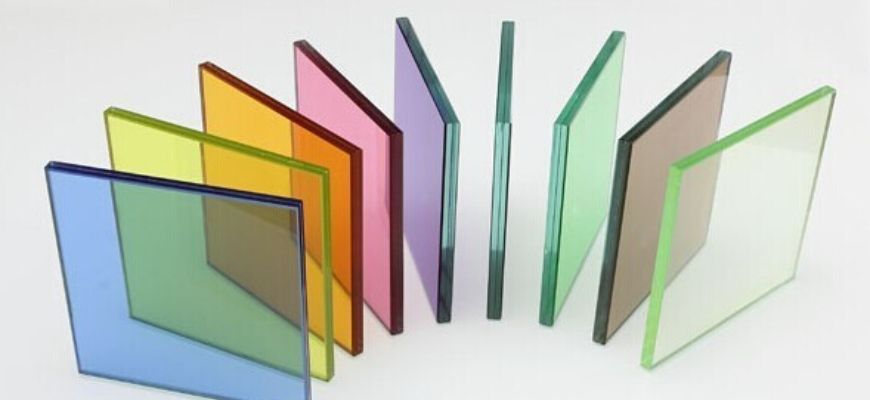In the world of architecture and design, safety and aesthetics often go hand in hand. Enter tempered glass, a revolutionary material that combines strength, resilience, and beauty like never before. 
From skyscrapers to mobile devices, tempered glass has become an indispensable component, redefining the standards of safety and style across industries. In this blog post, we’ll delve into the fascinating world of tempered glass and explore its numerous benefits and applications.
Features of Tempered Glass
Unbreakable Strength
Tempered glass is created through a meticulous process of heating and rapid cooling, which enhances its strength compared to regular glass. The resulting product is up to five times stronger and highly resistant to external forces such as impacts, pressure, and temperature changes. 
Enhanced Safety
One of the most remarkable properties of tempered glass is its unique fracture pattern. Unlike regular glass, which breaks into sharp, jagged pieces, tempered glass fractures into small, harmless granular chunks when subjected to excessive stress.
Versatility and Style
Tempered glass offers endless possibilities for architectural and interior design. Its versatility allows it to be customized into various shapes, sizes, and thicknesses to suit different applications. You need to choose the best tempered glass brand to protect your phone and eyes too.
Application across Industries
The benefits of tempered glass extend far beyond traditional architectural uses. In the realm of consumer electronics, tempered glass has become the go-to material for device screens, offering protection against scratches, impacts, and accidental drops. 
Its remarkable resilience ensures that smartphones, tablets, and laptops can withstand the rigors of everyday use while maintaining crystal-clear visibility.
Types of Tempered Glasses
Clear Tempered Glass
Clear tempered glass is a popular and widely used types of tempered glass that offers exceptional strength, safety, and clarity. It undergoes a specialized heat treatment process to increase its durability and resistance to breakage.
SPECIFICATIONS
- Transparency and high level of clarity
- Unobstructed views and allows natural light to pass
- View remains sharp and undistorted
- Highly resistant to breakage
In addition to its practical advantages, clear tempered glass offers aesthetic benefits. Its transparency allows it to blend seamlessly with any architectural or design style. It can be used to create open and bright spaces, maximizing the flow of natural light while maintaining a sense of openness.
You may also want to know the best selfie camera phones which are under Rs.20000. Check the updated list here.
Tinted Tempered Glass
Tinted tempered glass is a specialized types of tempered glass that has been infused with color during the manufacturing process. It offers not only the strength and safety of tempered glass but also additional benefits such as enhanced privacy, glare reduction, and improved aesthetics.
SPECIFICATIONS
- Tinted color adds a layer of obscurity, making it more difficult for people to see through the glass from the outside
- Reduce glare from sunlight
- Visual comfort allows for better visibility and reduced eye strain
- Design Versatility
In addition to its functional properties, tinted tempered glass also offers aesthetic appeal. The different tinted options, such as gray, bronze, blue, or green, provide designers with the opportunity to introduce a touch of color and create a specific ambiance within a space. Tinted glass can add a modern and sophisticated look to architectural projects, giving them a distinctive and stylish appearance.
Consider reading about mobile stand for cycle to choose from while cycling.
Frosted Tempered Glass
Frosted tempered glass is a specialized types of glass that has a smooth, opaque appearance created through techniques such as sandblasting or acid etching. It offers a unique combination of privacy, diffusion of light, and aesthetic appeal, making it a popular choice in various architectural and interior design applications.
SPECIFICATIONS
- The frosted finish diffuses light, obscuring the view from both sides of the glass
- The diffusion of light through frosted tempered glass also creates a soft, diffused glow, which can enhance the overall ambiance of a space
- It helps to reduce harsh glare and shadows, creating a more comfortable and inviting environment
Do check out the samsung keypad dual sim mobiles list here which are commonly used today as well.
In addition to its functional properties, frosted tempered glass offers design versatility. It can be customized with various patterns or designs to suit different architectural styles and interior themes. The frosted finish can be applied to specific areas of the glass, creating interesting visual effects and focal points. This makes frosted tempered glass an excellent choice for adding a decorative element to spaces, such as in shower enclosures, partitions, cabinet doors, or glass tabletops.
Patterned Tempered Glass
Patterned tempered glass is a specialized type of glass that features decorative designs or textures imprinted onto the surface. It offers a unique blend of functionality, aesthetics, and privacy, making it a popular choice for various architectural and interior design applications.
One of the primary advantages of this types of patterned tempered glass is its ability to add visual interest and create a distinctive look. The patterns or textures applied to the glass surface can range from simple geometric designs to intricate motifs or organic shapes.
In addition to its decorative and privacy-enhancing properties, patterned tempered glass retains the strength and safety features of tempered glass. The tempering process strengthens the glass, making it highly resistant to breakage and impact. In case of breakage, it shatters into small granular pieces, minimizing the risk of injury.
Do not forget to check the list of best DSLR camera under 50000 here.
Low-E Tempered Glass
Low-E (low-emissivity) tempered glass is a specialized types of glass that has a thin, transparent coating applied to its surface. This coating helps to improve energy efficiency by reducing heat transfer and blocking the transmission of UV radiation. When combined with the strength and safety of tempered glass, low-E tempered glass becomes a valuable solution for enhancing thermal insulation and maintaining a comfortable indoor environment.
The primary benefit of low-E tempered glass types is its ability to minimize heat transfer. The low-emissivity coating acts as a thermal barrier, reflecting radiant heat back into the room during cold weather and reducing heat gain from outside during hot weather.
Another advantage of low-E tempered glass is its ability to block UV radiation. The coating on the glass effectively filters out harmful ultraviolet rays, which are known to cause fading and damage to interior furnishings, artwork, and flooring.
Laminated Tempered Glass
Laminated tempered glass is a specialized type of glass that combines the benefits of both laminated glass and tempered glass. It consists of two or more layers of tempered glass bonded together with an interlayer of polyvinyl butyral (PVB) using heat and pressure. This combination creates a strong, durable, and highly secure glass product with unique properties and applications.
One of the primary advantages of laminated tempered glass is its exceptional strength and security. The tempering process strengthens the glass, making it highly resistant to breakage and impact.
Another significant benefit of laminated tempered glass is its ability to provide excellent sound insulation. The multiple layers of glass and the PVB interlayer act as a barrier to reduce the transmission of sound waves, effectively minimizing noise pollution from outside sources.
Consider Reading:










